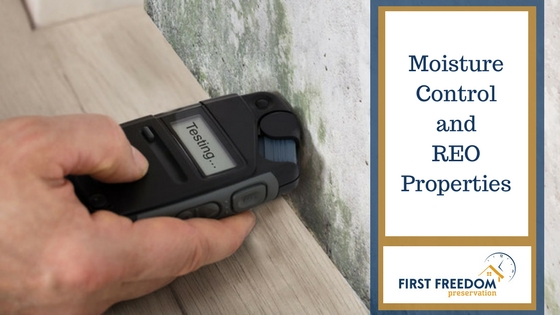One of the hardest parts of having an REO property is keeping it in good shape until you can get it sold. Of course, you never wanted this property to begin with—you were forced to foreclose or otherwise came into it, but your business is financing or selling properties, not rehabbing and maintaining them. Most lenders don’t have the resources to keep home improvement companies on staff.
That being said, it’s vital to maintain the property to avoid problems selling it. One of the biggest dangers to any vacant property is moisture. Read about moisture control and REO properties, and how you can mitigate this problem so you can sell your property quickly, at the best price possible.
Moisture Control and REO Properties
If you’re sitting on a foreclosure property, you know that one of the most important things you need to do is keep it in good shape. It has to be in good repair, structurally sound, and generally look good in order to be sale-able. Moisture control and REO properties, thus, go hand in hand.
Moisture is the biggest danger to almost any house, whether lived in or vacant. It leads to structural damage and even worse, mold growth.
Moisture and Mold
Mold is everywhere—that’s a fact. There are mold spores just naturally around in the air. Normally, they don’t hurt anyone or anything. When they come into contact with a lot of moisture, however, they start to turn into actual mold which grows on walls and surfaces. Mold can create major respiratory problems.
Mold also does real structural damage to buildings, eating away at mortar, wood and other surfaces. At best this can make it hard to sell a building. At worst, it can cause the building to be condemned.
Ventilate Your Building
Be sure that your property is properly ventilated. Mold grows in areas with excessive moisture and poor ventilation. Make sure that there’s plenty of air flow moving through the place to keep moisture from building up. Consider installing a dehumidifier in your property to keep levels down.
Protect against Moisture
Protect your building against moisture infiltration in the first place. Clean your gutters at least twice a year at the change of seasons in the spring and fall. Make sure that the ground slopes down away from the property rather than towards it. Keep downspouts directed away from the foundation.
If you have crawl spaces, install a plastic vapor barrier on the floor, and check the basement or crawl spaces for any signs of moisture collection. Don’t just use your eyes—does it smell musty? You want a dry and dusty smell, not a damp and musty one.
Use an REO Services Company
Hire an REO services company to keep up with routine maintenance. They will regularly inspect the building, maintain the dehumidifier, and take care of any issues that may arise. They will save you the time and money of doing it yourself, and serve as your best shot at controlling moisture.
If you’d like some information about moisture control and REO properties, get in touch with First Freedom Preservation today.


Recent Comments